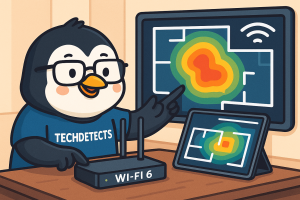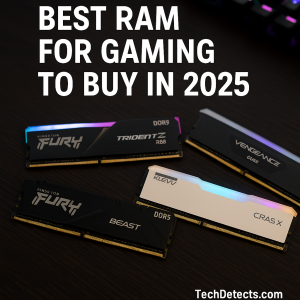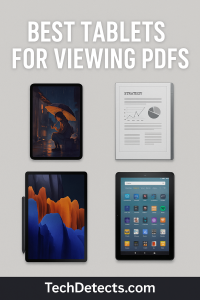Best Wi‑Fi 6 Routers to Buy in 2026
Wi‑Fi 6 (802.11ax) remains the sweet spot for price, stability, and device compatibility in 2026. While Wi‑Fi 6E/7 exist, a good Wi‑Fi 6 router often delivers the best real‑world value: strong 5 GHz performance, OFDMA for crowded homes, MU‑MIMO for many devices, and WPA3 security. Below are buyable, proven models we trust for apartments, large homes, and multi‑story houses. We’ve balanced speed, coverage, firmware quality, and ease of setup—not just peak spec numbers.

How we picked
- Throughput where it matters: Stable 5 GHz and 160 MHz (where supported) for modern phones/laptops.
- Coverage & backhaul: Strong radios and options for Ethernet backhaul (or good wireless mesh).
- WAN/LAN: Preference for 2.5GbE WAN/LAN on upper‑mid models; Gigabit minimum elsewhere.
- Security & updates: WPA3, frequent firmware updates, and parental controls.
- Ease of use: Clean apps/GUI, clear channel controls, DFS support on higher tiers.
- Value: Real‑world performance per dollar, not marketing peaks.
Quick Picks (TL;DR)
- Best Overall (Standalone): ASUS RT‑AX86U Pro (AX5700) – fast 5 GHz, 2.5GbE, excellent firmware.
- Best Value (Standalone): TP‑Link Archer AX73 (AX5400) – great price/perf, easy app, stable coverage.
- Best Long‑Range (Tri‑band Standalone): ASUS RT‑AX88U Pro (AX6000) – extra 5 GHz radio + 2.5GbE for bigger homes.
- Best Mesh for Most Homes: TP‑Link Deco X55 (AX3000) – simple, reliable whole‑home coverage.
- Best Performance Mesh: ASUS ZenWiFi XT8 (AX6600) – tri‑band with strong backhaul and granular controls.
- Best for Gamers: ASUS TUF Gaming AX5400 / RT‑AX82U – low latency QoS, great 5 GHz, RGB (AX82U).
- Best Budget: TP‑Link Archer AX55 (AX3000) – inexpensive and solid for 100–500 Mbps ISPs.
- Best Compact/Apartment: eero 6+ (AX1800) – simple app, good stability for dense apartments.
Note: Names/availability can vary slightly by region. Pick the closest matching model number with the same class/specs.
ASUS RT‑AX86U Pro (AX5700) — Best Overall (Standalone)
Why it’s great: Legendary stability with 2.5GbE WAN/LAN, excellent 160 MHz 5 GHz throughput, strong DFS support, and class‑leading ASUSWRT features (AiMesh, Adaptive QoS, USB features). It’s a reliable long‑term anchor for busy homes.
Best for: Power users who want a single router with headroom for many devices and gigabit+ service.
Highlights: AX5700 · 2.5GbE port · 160 MHz · WPA3 · AiMesh · Adaptive QoS.
TP‑Link Archer AX73 (AX5400) — Best Value (Standalone)
Why it’s great: A proven AX5400 performer with six external antennas, solid 5 GHz range, and a friendly app. You get HomeShield basic controls, USB 3.0, and very good reliability for the money.
Best for: Families wanting fast, stable Wi‑Fi on a sensible budget.
Highlights: AX5400 · 4×4 5 GHz · good thermals · WPA3 · OneMesh support.
ASUS RT‑AX88U Pro (AX6000) — Best Long‑Range (Tri‑band Standalone)
Why it’s great: Upgraded radios and dual 2.5GbE with a second 5 GHz band for more aggregate throughput. Great for large homes with many active devices and mixed work‑from‑home + streaming loads.
Best for: Bigger households that need more lanes on 5 GHz.
Highlights: AX6000 tri‑band · dual 2.5GbE · 160 MHz · AiMesh · powerful CPU.
TP‑Link Deco X55 (AX3000) — Best Mesh for Most Homes
Why it’s great: A two‑ or three‑pack easily blankets multi‑story homes. Setup takes minutes, roaming is smooth, and Ethernet backhaul is fully supported. Excellent balance of price, coverage, and simplicity.
Best for: Households that value plug‑and‑play whole‑home Wi‑Fi with minimal tweaking.
Highlights: AX3000 · 2× Gigabit per unit · seamless roaming · OneMesh/Deco app.
Note: Prioritizes stability and simplicity over 160 MHz peak speeds.
ASUS ZenWiFi XT8 (AX6600) — Best Performance Mesh
Why it’s great: A tri‑band mesh with a strong dedicated 5 GHz backhaul and robust controls (channels, DFS, guest VLANs, AiProtection). Ideal when you want mesh + power user features.
Best for: Large homes and users who want control as well as coverage.
Highlights: AX6600 tri‑band · strong backhaul · AiMesh · 2.5GbE WAN.
ASUS TUF Gaming AX5400 / RT‑AX82U — Best for Gamers
Why it’s great: Consistently low latency with solid QoS, 160 MHz support, and excellent 5 GHz range. The AX82U adds RGB if you like flair; the TUF model focuses on stealth design and durability.
Best for: Gamers who need stable ping while the rest of the house streams.
Highlights: AX5400 · Adaptive/Game QoS · WTFast support · good thermals.
TP‑Link Archer AX55 (AX3000) — Best Budget
Why it’s great: Delivers the core Wi‑Fi 6 experience for basic ISP plans and smaller homes—without the noise. Clean app, WPA3, and enough horsepower for day‑to‑day devices.
Best for: Apartments and small homes up to ~120–150 m² with 100–500 Mbps service.
Highlights: AX3000 · WPA3 · OneMesh · solid value.
eero 6+ (AX1800) — Best Compact/Apartment
Why it’s great: Tiny nodes with easy app‑based management, great stability, and optional multi‑node kits for apartments/condos. Works well for non‑tinkerers who just want steady Wi‑Fi.
Best for: Dense environments and users who prefer set‑and‑forget operation.
Highlights: AX1800 · compact design · optional multi‑pack · excellent roaming.
Note: Prioritizes stability and simplicity over 160 MHz peak speeds.
Comparison Table (at a glance)
| Model | Class | Bands | 160 MHz | Ports | Mesh Support | Why pick it |
|---|---|---|---|---|---|---|
| ASUS RT‑AX86U Pro | AX5700 | Dual‑band | Yes | 1× 2.5GbE + GbE | AiMesh | Best overall standalone |
| TP‑Link Archer AX73 | AX5400 | Dual‑band | Yes | GbE + USB 3.0 | OneMesh | Best value standalone |
| ASUS RT‑AX88U Pro | AX6000 | Tri‑band | Yes | 2× 2.5GbE + GbE | AiMesh | Long‑range tri‑band pick |
| TP‑Link Deco X55 (2–3pk) | AX3000 | Dual‑band | No* | 2× GbE/node | Deco mesh | Best easy mesh |
| ASUS ZenWiFi XT8 (2pk) | AX6600 | Tri‑band | Yes | 2.5GbE WAN + GbE | AiMesh | Performance mesh pick |
| ASUS TUF AX5400 / RT‑AX82U | AX5400 | Dual‑band | Yes | GbE | AiMesh | Low‑latency gaming |
| TP‑Link Archer AX55 | AX3000 | Dual‑band | No | GbE | OneMesh | Budget essential |
| eero 6+ (1–3pk) | AX1800 | Dual‑band | No* | GbE | eero mesh | Compact apartment pick |
About 160 MHz: Great for latest phones/laptops in uncongested areas. In crowded cities, DFS/160 MHz may be limited by radar/interference—don’t worry, 80 MHz still performs very well.
Mesh note: Systems like Deco X55 and eero 6+ prioritize stability and simplicity over 160 MHz peak speeds.
Setup & buying tips
- Match your ISP speed: Buying an AX6000 router won’t make a 200 Mbps line faster—focus on stability and coverage first.
- Positioning wins: Place the main router central and high, away from metal and microwaves. Use Ethernet backhaul for mesh if possible.
- Use WPA3 + separate guest Wi‑Fi: Keep IoT devices on a guest SSID to reduce risk.
- Channel planning: Try DFS channels on 5 GHz for less congestion; fall back if you see dropouts.
- Firmware & apps: Update firmware, disable bloated features you don’t use, and back up your config.
- When to go mesh: If you need two or more satellites or your home has concrete/steel walls, mesh often beats a single high‑power router.
- When to go 6E/7: If you’ve got many Wi‑Fi 6E/7 devices and want a clean 6 GHz band, look at our Wi‑Fi 6E/7 guide; otherwise Wi‑Fi 6 remains excellent value.
Final Thoughts
For most homes in 2026, Wi‑Fi 6 delivers the best balance of price, coverage, and stability. The ASUS RT‑AX86U Pro is a stellar one‑box solution; Archer AX73 is the value champ; RT‑AX88U Pro and ZenWiFi XT8 serve large/complex homes; Deco X55 is the simplest mesh; and TUF AX5400/RT‑AX82U keep gamers happy. Choose the class that fits your ISP speed, home size, and tinkering appetite.
You can looking into the portable options here, Best Portable WiFi Hotspots to buy.






